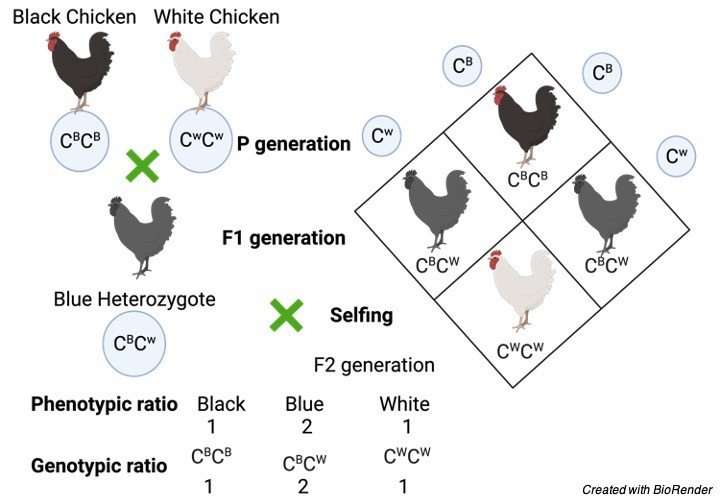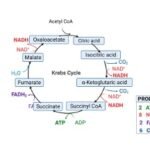Incomplete Dominance: Introduction
We all know that Mendel’s contribution is very important for the field of genetics till now. And his contributions and theories are used in both scientific and medical field until date and law of dominance is one such important theory to be taken note of.
Before knowing about incomplete dominance, it is very much essential to know about the Mendel and his crossing techniques.
Johann Mendel was the pioneer in classical genetics, who on doing experiment’s with pea plants and on undergoing plant hybridizations found many characteristics of genes and how it undergoes evolution and also concluded many laws and evolution related to genetics.
Incomplete Dominance and Mendel’s Crossing Techniques
Mendel experimented an edible pea plant which is scientifically known as Pisum sativum, which gave him tremendous results and thus sativum is considered as the best hybridization material for experiments.
The seven contrasting characters of pea plants include size as tall and dwarf, color of the cotyledon as green or yellow, seeds may be round or wrinkled, seed coat is colored or not, whether the flowers position is axial or terminal, the flower color is red or white.
The plants with these contrasting characters are led to cross pollinate and the characters of upcoming generations are noted.
The table given below shows the seven pairs of contrasting characters in a Mendel’s pea plant.
| Characters | Dominant Trait | Recessive Trait |
| Seed Shape | Round | Wrinkled |
| Seed Color | Yellow | Green |
| Flower Color | Violet | White |
| Pod Shape | Full | Constricted |
| Pod Color | Green | Yellow |
| Flower Position | Axial | Terminal |
| Stem Height | Tall | Dwarf |
It is important to know about the law of dominance, before studying in detail about Incomplete dominance.
Law of Dominance
In hybridization techniques, two alleles are considered one as dominant character and other as recessive character when these alleles are let to undergo fertilization by crossing techniques the expression of dominant allele will be high compared to that of recessive allele phenotypically.
Hence the dominant character will be expressed Hence it is known as law of dominance.
Law of dominance is also said to be Mendel’s first law of inheritance.
Mechanism of Dominance
On undergoing various experiments Mendel evidenced himself that there will be a difference in their genetic characters, even though the phenotypic character resembles as such as their parents.
Because the character does not remain the same as it is being for their parents.
Therefore, there will be something which controls all these characters which are later found as genes which are the units of DNA (Deoxyribo nucleic acid) or RNA (Ribo nucleic acids) accordingly which are present in the chromosomes of an individual and are passed on to the next generation through parents via gametes of male and female.
Hence the individual has 23 pair of chromosomes each pair from one of the parents, each chromosome consists of genes as their functional unit which consists of contrasting characters made up of alleles.
If there are two or more contrasting pair of alleles then it is said to be as allelomorph. These alleles are produced as the effect of mutation in a wild gene.
For example, let us consider a pea plant, where homozygous tall plant has two alleles such as TT on their gene loci in their homologous chromosomes and homologous dwarf plants is represented by the allele tt.
During the process of gametogenesis, the two homologous alleles TT and tt are separated and each chromosome contains a single allele as T and t and it is passed via gametes.
And these alleles which are passed through gametes of both the parents (father and mother) combine together during fertilisation.
Thus, the new individual in the F1 generation has two different alleles and it is referred to as heterozygous in condition.
The dominant character is being expressed and the recessive character of the individual gets suppressed this the mechanism why only dominant characters are expressed though the individual has both the alleles.
Variation in Dominance
Mendel studied the dominant and recessive characters in pea plants which helped him to identify seven pairs of genes showing different phenotypes in homozygous and heterozygous condition with lot of variation.
Variation in dominant character is further classified into two types as Incomplete and complete dominance.
What is Incomplete Dominance?
In some cases, the heterozygous dominant allele does not mask the character of a recessive allele, hence it results as heterozygous intermediate character. This phenomenon is referred to as incomplete dominance.
1. Example of Incomplete Dominance
Considering an example of flowers having their colours as red and white, when they are crossed together it leads to the appearance of pink colour flowers in the first generation, in general mixture of red and white colour leads to the formation of white colour, hence it is said that the red colour gene did not dominate over the white allele so it has been resulted in the formation of pink coloured flower.
The phenotypic ratio resembles same even in the F2 generation.

On considering other examples such as Four’ o clock plant which is known as Mirabilis jalapa or snapdragons, it has a red coloured homozygous petal when it is crossed with plant have white coloured homozygous petals the resultant plant is in the combination of pink coloured petals in the Filial 1 generation which shows incomplete dominance.
In filial 2 generation 2 parental form occurs and 2 hybrid form occurs.
The reappearance of parental form in the filial two generation helps to understand that alleles do not mix up with each other while forming a trait, they just stand together to show their character.
In the above graph, R1 is considered as an allele for red petal flower and R2 is considered as an allele for white coloured flower and R1R2 is considered as an allele for hybrid pink petal flower.
2. Example of Incomplete Dominance
When an Andalusian fowl having homozygous black feather and homozygous splash feathers are crossed the resultant allele obtained was with blue feathers.
In filial 2 generation there will be two parental forms and 2 hybrid forms.
In the below mentioned graph, CB is considered as allele for black fowl and CW is considered as an allele for white fowl and CBCW is considered as an allele for blue fowl.

Mendel’s Law of Segregation Mechanism, Examples, and Crossing Techniques
Incomplete Dominance Citations
- Combined effects of dosage compensation and incomplete dominance on gene expression in triploid cyprinids. DNA Res . 2019 Dec 1;26(6):485-494.
- Incomplete dominance of deleterious alleles contributes substantially to trait variation and heterosis in maize. PLoS Genet . 2017 Sep 27;13(9):e1007019.
- The molecular basis of incomplete dominance at the A locus of CHS-D in the common morning glory, Ipomoea purpurea. J Plant Res . 2011 Mar;124(2):299-304.
- Incomplete dominance of the gene for naked neck in domestic fowl. Poult Sci . 1976 Mar;55(2):820-2.


